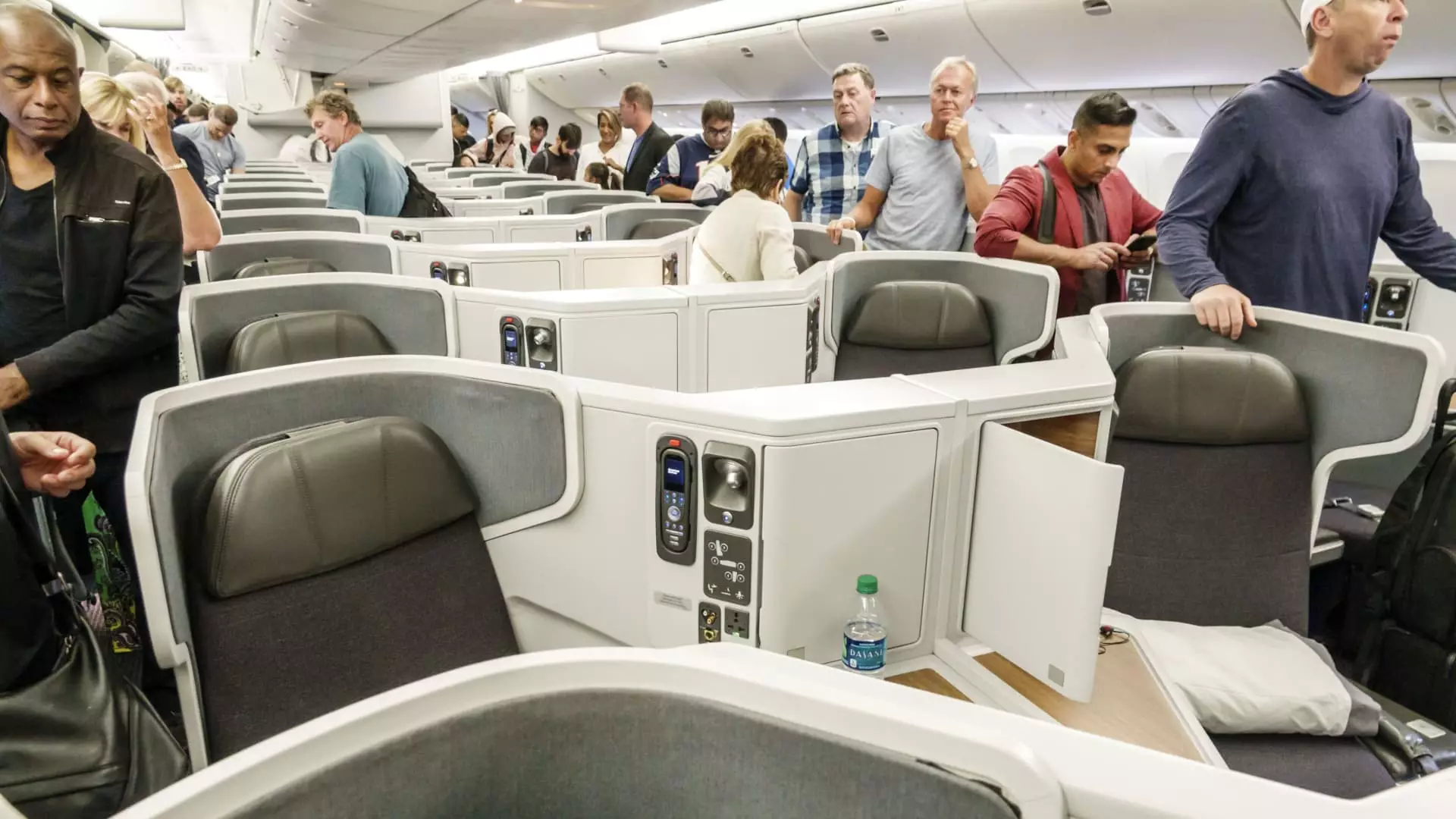The travel landscape has undergone a significant transformation in the aftermath of the COVID-19 pandemic. What was once characterized by an overwhelming focus on budget-friendly options has morphed into a landscape where premium seats are increasingly sought after. Airline passengers are no longer content with just cheap seats; they are now willing to pay a premium for a more spacious and comfortable flying experience. This shift is not merely a fleeting trend but a profound change in traveler preference that has far-reaching implications for airlines and their pricing strategies.
The rising demand for premium options has generated a ripple effect throughout the airline industry. Frequent flyers with elite status are facing stiffer competition than ever before, making upgrades to the coveted front of the cabin more challenging to secure. As airlines bolster their loyalty programs, a growing number of travelers are vying for elite status. Consequently, the era of easy upgrades is giving way to a more competitive environment. As the year-end holiday season approaches, airlines anticipate unprecedented passenger numbers, fueled by a collective eagerness to travel again post-pandemic.
Airlines are now in a delicate balancing act between providing attractive perks for loyal travelers and maximizing revenue through premium seating options. The financial stakes are high, with billions of dollars in revenue riding on the success of premium cabin sales. Loyalty programs have become a critical revenue stream, and airlines are recalibrating the criteria for earning elite status. The emphasis has shifted from sheer travel distance to how much customers spend, reflecting a broader trend to attract higher-paying passengers.
Shifts in Pricing Structures: A Case Study
Analyzing ticket price variations reveals the substantial financial disparity between different classes. For instance, on a recent round trip from Newark to Los Angeles, travelers might pay as little as $347 for an economy seat while a first-class ticket could soar to nearly $1,800. This stark contrast in pricing underscores how airlines are leveraging premium offerings to bolster their bottom line. American Airlines, for example, showcases this divergence more vividly during peak travel times, with coach tickets on transatlantic flights reaching around $1,100 compared to first-class seats priced at over $3,000.
The shift towards premium seating options is not isolated to a single airline but reflects a widespread tactic across the industry. Major carriers such as Delta and American have adapted their offerings to meet passenger demand for enhanced travel experiences. Delta has experienced a revolution in its first-class occupancy rates, climbing from just 12% occupancy 15 years ago to a staggering 75% today. This data conveys how travelers previously motivated by loyalty rewards are now surrendering their hard-earned miles in exchange for a more comfortable ride.
Airlines are not only adjusting pricing but are also innovating to enhance passenger experiences. New product offerings like JetBlue’s “junior Mint” and Alaska Airlines’ retrofitted aircraft with premium seats demonstrate the industry’s commitment to meeting consumer demands for better services. The upgrades include improved cabin designs, larger screens, and enclosed flatbed seats, catering to travelers’ desires for more privacy and comfort while flying.
The evolving preferences of younger travelers are driving airlines to think differently about their offerings. The emergence of a generation willing to invest more in their travel experiences is compelling airlines to rethink their cabin structures and service offerings. While Southwest Airlines remains focused on maintaining a traditional coach model, its plans to introduce extra-legroom seats indicate a willingness to adapt to the changing landscape.
As the airline industry adjusts to a new era post-pandemic, the demand for premium seating options is here to stay. This shift in consumer behavior, coupled with financial incentives, will continue to shape the airlines’ strategic decisions. Whether navigating a maze of elite status or investing in more luxurious seating configurations, travelers are prepared to pay for comfort and convenience. The airlines, in turn, stand at a pivotal crossroads, evaluating how best to meet the evolving expectations of their passengers while ensuring a sustainable profit margin. The outcome of this evolution will influence the very architecture of air travel for years to come.

